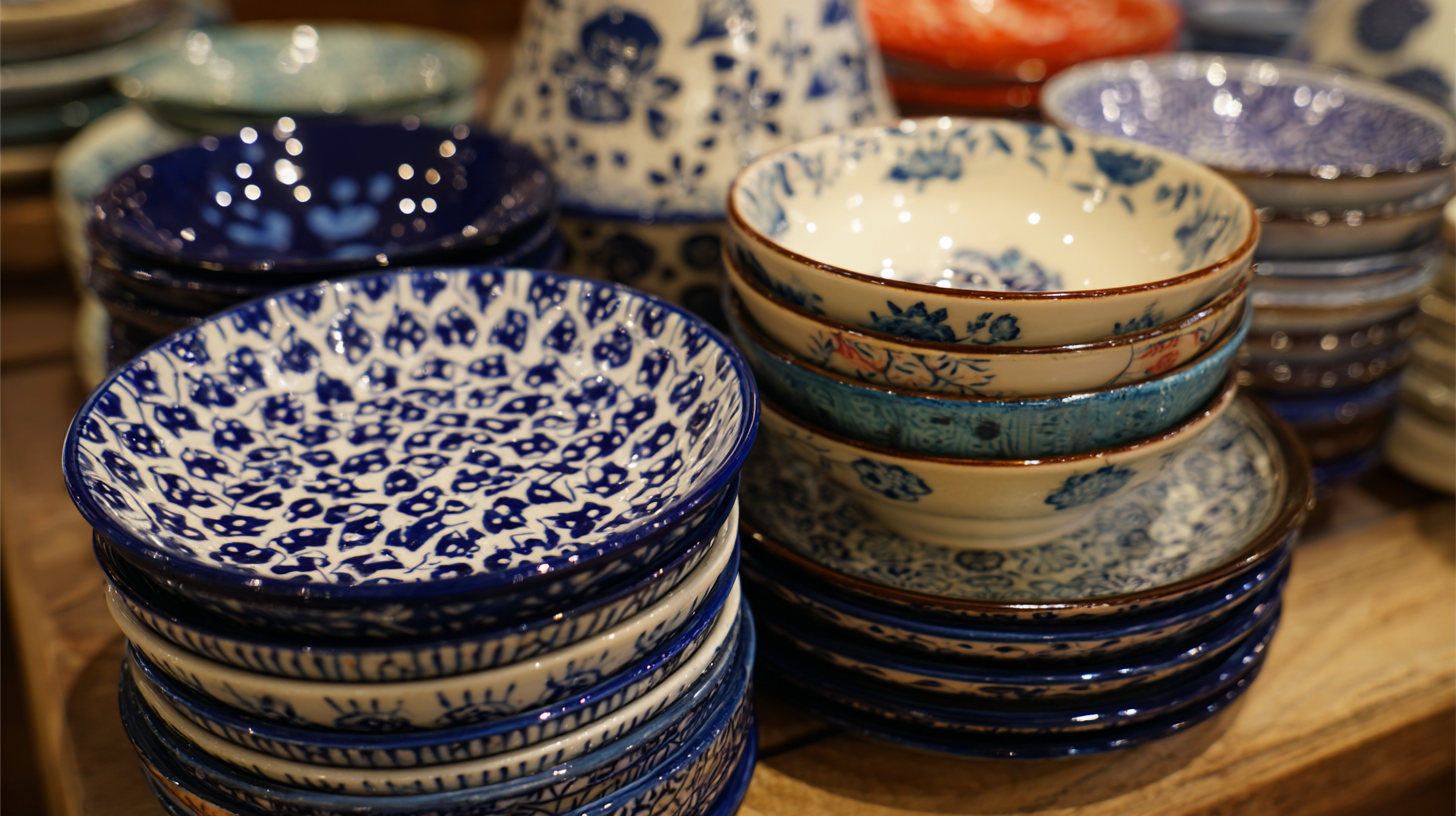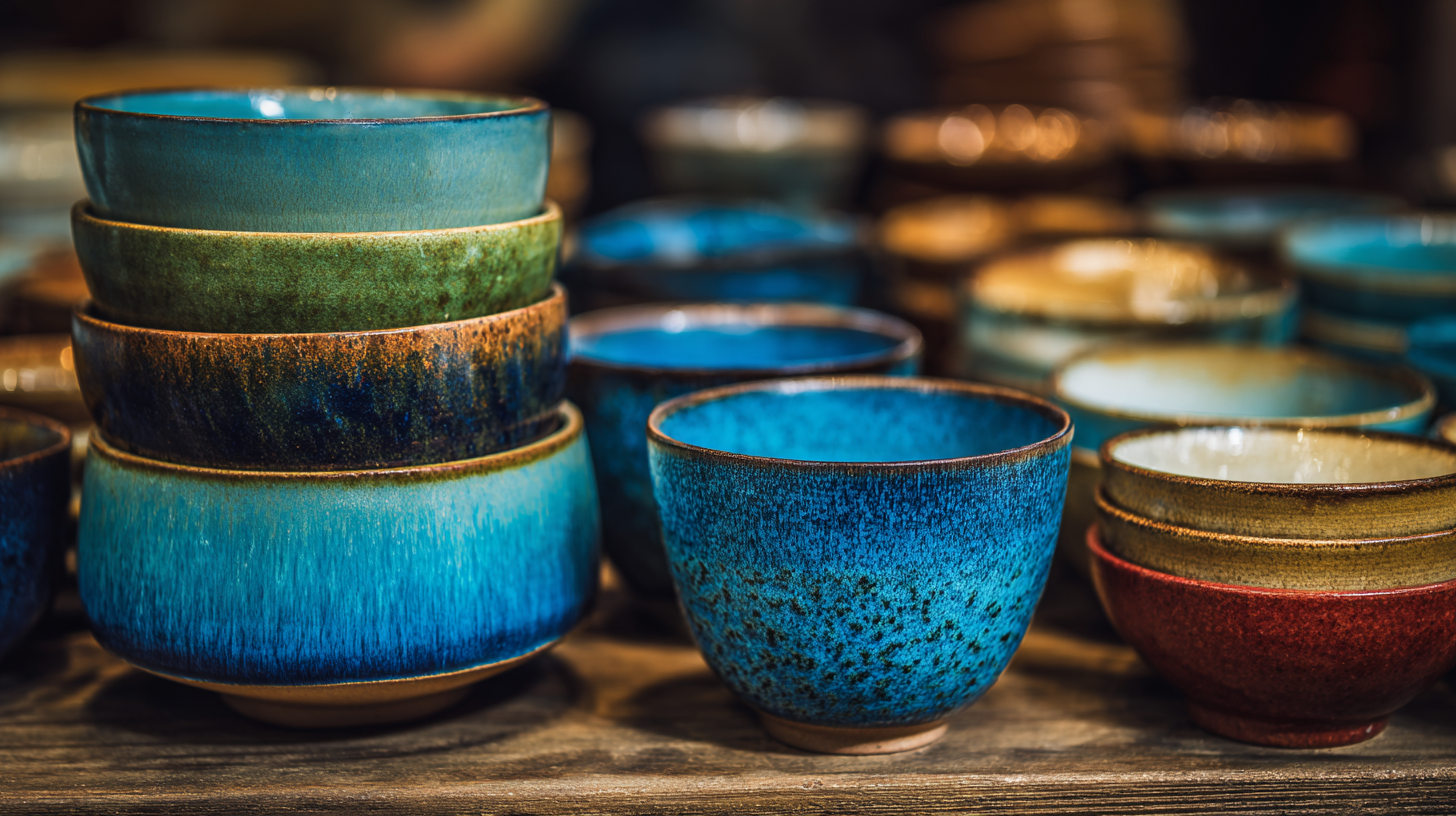

The global ceramic tableware market has seen significant growth, with a projected compound annual growth rate (CAGR) of 4.6% from 2021 to 2028, according to a report by Grand View Research. As consumers increasingly seek high-quality and aesthetically pleasing dining experiences, selecting the right ceramic tableware has become paramount for retailers and wholesalers alike. However, the challenge lies in sourcing these products from reputable manufacturers who can ensure both quality and consistency. To navigate this competitive market, it is essential to understand the key factors in identifying the best suppliers and assessing their capabilities. This blog will provide seven essential tips to help you source the best ceramic tableware globally, ensuring that you cater to the evolving preferences of discerning customers while maintaining high standards for your brand.

Sourcing quality ceramic tableware can be a rewarding yet challenging endeavor. One of the primary hurdles faced by buyers is identifying reliable suppliers that meet quality standards. With countless manufacturers across the globe, it's crucial to invest time in vetting potential partners. This involves checking their production facilities, understanding their sourcing of raw materials, and reviewing their quality control processes. A thorough background check, including asking for samples and previous client feedback, can save you from future disappointments.
Another common challenge arises from navigating cultural differences and communication barriers. Misunderstandings can lead to inaccuracies in orders or delays in production schedules. Establishing clear lines of communication, perhaps through a dedicated representative or using visual aids and translations, can greatly enhance collaboration. Additionally, understanding the local market nuances, including preferences in design and color, can help tailor your sourcing strategy effectively and avoid mismatches between supply and demand.
When sourcing ceramic tableware globally, identifying reliable suppliers is crucial to ensuring quality and consistency. According to a report by IBISWorld, the global ceramics market is projected to reach $283 billion by 2025, driven by rising consumer demand for sustainable and aesthetically pleasing products. This market growth emphasizes the need for sourcing strategies that prioritize quality suppliers who adhere to production standards and ethical practices.
One of the key aspects to consider when evaluating suppliers is their adherence to international quality certifications such as ISO 9001. Suppliers certified under this standard are often more reliable, as they demonstrate a commitment to consistent quality management systems. Additionally, platforms like Alibaba and Global Sources provide ratings and reviews that can assist in assessing supplier reliability. According to Statista, over 60% of businesses report that good supplier relationships significantly impact their operational efficiency, highlighting the importance of thorough vetting and due diligence in the supplier selection process. By focusing on these criteria, businesses can secure partnerships that enhance their product offerings and support long-term growth in the competitive ceramic tableware market.
| Tip # | Description | Supplier Criteria | Location | Certification |
|---|---|---|---|---|
| 1 | Research Market Trends | Established track record | Asia | ISO 9001 |
| 2 | Attend Trade Shows | Product quality assurance | Europe | BSCI |
| 3 | Use Online Marketplaces | Positive reviews and ratings | America | CE Marking |
| 4 | Verify Supplier Credentials | Membership in trade associations | Asia | FDA Approval |
| 5 | Request Samples | Transparency of production process | Oceania | SGS Certificate |
| 6 | Negotiate Terms and Pricing | Flexible payment options | Africa | TUV Certification |
| 7 | Establish Communication | Responsiveness and support | Global | ISO 14001 |
When it comes to sourcing ceramic tableware, understanding the various styles and types available globally is crucial. From elegant porcelain to rustic stoneware, each type of ceramic has its unique characteristics that contribute to its aesthetic and functionality. For instance, porcelain is known for its delicate beauty and strength, making it perfect for formal dining settings, while stoneware offers durability and a more casual charm that suits everyday use.
One essential tip for sourcing the best ceramic tableware is to consider the craftsmanship behind each piece. Handmade ceramics often tell a story, showcasing traditional techniques that enhance their appeal. Additionally, pay attention to the finish and glaze, as these can affect not only the look but also the durability and usability of the tableware.
Another important aspect is to explore the cultural significance of different styles. For example, Japanese ceramics often prioritize minimalism and nature-inspired designs, while Italian ceramics may feature vibrant colors and intricate patterns. By understanding these cultural nuances, you can choose ceramic tableware that resonates with your personal style and enhances your dining experience.
This chart represents the various styles of ceramic tableware and their global sourcing popularity based on a survey of industry professionals.
When sourcing ceramic tableware globally, implementing stringent quality control measures is crucial to ensure the products meet high standards. First and foremost, establishing clear specifications is essential. This includes detailing the materials used, the production processes, and the desired finishes. By providing suppliers with a comprehensive understanding of your requirements, you can minimize deviations that may affect the quality of the final product.
Another vital aspect of quality control is conducting regular inspections during different production stages. This not only helps identify potential issues early on but also reinforces accountability among suppliers. Utilizing third-party quality assurance services can add an additional layer of scrutiny, ensuring that ceramics are tested for durability and safety before they reach the market. Additionally, maintaining an open line of communication with your suppliers about any quality concerns or feedback can foster a collaborative environment. This proactive approach not only enhances the quality of ceramic tableware but also builds a strong, trustworthy partnership with manufacturers around the globe.

Navigating customs and import regulations can be a daunting challenge when sourcing ceramic tableware globally. According to a report from the International Trade Centre, ceramics represented over $16 billion in global exports in 2022, highlighting the industry’s significant scale and complexity. To successfully enter international markets, importers must understand local regulations, including safety standards and labeling requirements, which vary widely by country.
Tip 1: Research the Import Regulations. Different countries have specific requirements for imported ceramic goods, such as certifications for lead content and temperature resistance. For instance, the European Union enforces strict regulations under the REACH (Registration, Evaluation, Authorisation and Restriction of Chemicals) framework, necessitating compliance. Always start by reviewing the targeted market’s regulations to avoid potential fines or product recalls.
Tip 2: Engage Local Experts. Partnering with local customs brokers or legal experts can streamline the import process. They can provide invaluable insights into the latest regulatory changes and help navigate paperwork efficiently. A 2023 survey from the Global Ceramic Association noted that 67% of successful importers engaged local expertise to mitigate risks associated with customs clearances. Building strong partnerships can significantly reduce delays and compliance issues.

